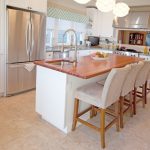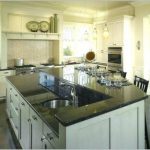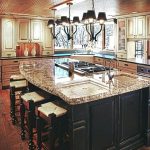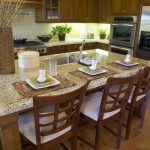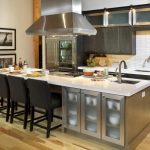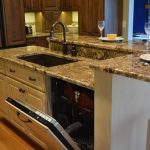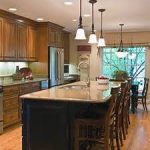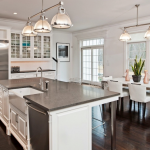The kitchen island has become a staple in modern kitchen design, providing additional counter space, storage, and often a place to seat guests or family members. However, designing a functional kitchen island is not as simple as placing a slab of granite in the center of your kitchen. To truly make the most of this versatile feature, it is important to consider its size, layout, storage options, and overall functionality.
Size Matters
The size of your kitchen island should be proportional to the size of your kitchen. If your kitchen is small, a large island may overwhelm the space and make it difficult to move around. On the other hand, a small island in a large kitchen may look out of place and not provide enough workspace. As a general rule of thumb, your island should be at least 3 feet long and 2 feet deep, but it can be larger depending on the size of your kitchen and your needs.
Layout
The layout of your kitchen island should be functional and efficient. Consider the work triangle – the distance between your stove, sink, and refrigerator – and make sure your island does not disrupt this flow. If you plan to use your island for cooking or food preparation, consider adding a sink or cooktop to make it more convenient. Additionally, make sure there is enough space around the island for people to move freely and for cabinet doors and drawers to open without obstruction.
Storage Options
One of the biggest advantages of a kitchen island is the additional storage it provides. Consider incorporating cabinets, drawers, or shelves into your island to store pots, pans, utensils, and other kitchen essentials. You can also add features like a built-in wine rack, spice rack, or trash bin to make your island even more functional. If you plan to use your island for seating, consider adding a concealed storage area underneath for extra versatility.
Functionality
Think about how you will use your kitchen island on a daily basis and tailor its design to suit your needs. If you love to entertain, consider adding a bar sink, wine cooler, or built-in seating. If you have young children, a lower countertop for baking or crafting activities may be more suitable. You can also customize your island with features like a built-in cutting board, pot rack, or charging station to make it even more functional.
In conclusion, designing a functional kitchen island requires careful consideration of size, layout, storage options, and overall functionality. By taking these factors into account, you can create a kitchen island that not only looks great but also enhances the efficiency and usability of your kitchen. Whether you use your island for cooking, dining, or entertaining, a well-designed kitchen island can truly be the heart of your home.
 darbylanefurniture.com Interior design ideas with the latest interior inspiration
darbylanefurniture.com Interior design ideas with the latest interior inspiration

